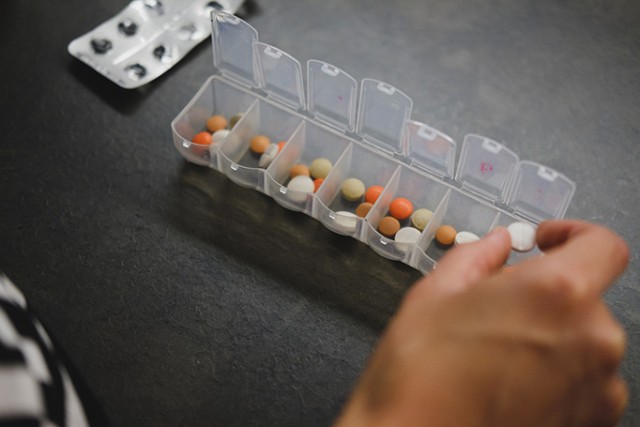The Biden Administration is acting to promote competition and lower drug prices for all Americans
Joint blog by Kathi Vidal, Under Secretary of Commerce for Intellectual Property and Director of the USPTO, and Robert M. Califf, FDA Commissioner

President Biden is helping Americans protect and preserve their health and live with the dignity of knowing that they can care for themselves and their loved ones, in part by making the cost of prescription drugs more reasonable. The President has outlined a multipoint plan to increase access and reduce the cost of prescription drugs in his July 2021 Executive Order on Promoting Competition in the American Economy. Included in that plan was a call for the United States Patent and Trademark Office (USPTO) and the Food and Drug Administration (FDA) to leverage our collective expertise in promoting innovation, competition, and the approval and regulation of safe and effective drugs to help provide relief to American families at the pharmacy.
The Biden Administration, including the USPTO and the FDA, recognizes the important contributions and lifesaving treatments developed by the pharmaceutical industry, a primary force in the discovery and development of drugs and vaccines that have fully or nearly eradicated deadly diseases like smallpox, polio, measles, diphtheria, hepatitis B, and meningitis, and highly effective treatments for various cancers and other chronic diseases.
That work, and the billions of dollars spent on bench research and clinical trials, is made possible in part through our patent laws. The foundations of these laws were written into the U.S. Constitution by our nation’s founders, and pharmaceutical companies can utilize patents granted for a limited time to recoup and benefit from their investments.
Our laws also allow for and encourage generic drug manufacturers to enter the market to increase competition and drive down prices. This delicate balance rewards and incentivizes those who do the work to create original lifesaving drugs, as well as those who later enter the market to source and provide access to more affordable alternatives. These laws contribute to the fact that thirteen of the top twenty most innovative and inventive pharmaceutical companies of 2021 are headquartered in the United States. The U.S. pharmaceutical industry offers enormous benefits to Americans when more medicines and treatment options are available to treat a wide range of diseases.
But more must be done. As President Biden noted in the Executive Order almost exactly a year ago, while the issuance of robust and reliable patents to incentivize pharmaceutical innovations is critical, our patent system must not be used to unjustifiably delay generic drugs and biosimilar competition beyond that reasonably contemplated by law.
To further the objectives of this Executive Order, the USPTO and the FDA recently completed an exchange of letters outlining numerous initiatives to execute on the President’s agenda. These initiatives will strengthen our relationship and expand the resources available for assessing patentability and addressing instances of patents being used improperly to delay competition.
Through these initiatives, the USPTO will protect against the patenting of incremental, obvious changes to existing drugs that do not qualify for patents. This effort can lead to lower drug prices because drug companies will not be able to unjustifiably delay generic competition based on trivial changes to a drug product.
The USPTO will work to ensure that patent examiners have the time and resources they need to conduct a thorough review of patent applications for pharmaceutical inventions. The FDA will assist the USPTO in providing patent examiners with training on the state of the art in the pharmaceutical and biologics fields, and the USPTO will provide new tools for patent examiners to search enormous and growing global databases of technical information—including publicly available sources maintained by the FDA—to determine whether similar innovations already exist.
The USPTO and the FDA will further collaborate to develop policies aimed at protecting and promoting U.S. innovation while advancing competition that can lower drug prices for all Americans. We invite the public to participate in this process through upcoming outreach events and listening sessions.
Our intent is to ensure our government’s innovation system strikes the appropriate balance, encouraging meaningful innovation in drug development while not unduly delaying competition that provides relief from the high cost of medicines.
For more information on the Biden Administration’s initiative to lower drug prices, please go to the White House website. For information on the FDA and USPTO planned initiatives please visit the USPTO website.
Posted at 05:43AM Jul 06, 2022 in USPTO | Comments[3]


Posted by Desus on July 10, 2022 at 03:43 AM EDT #
Posted by Online Marketing Company in Edmonton on July 12, 2022 at 04:59 AM EDT #
Posted by History Assignment Help Service on July 25, 2022 at 12:35 AM EDT #